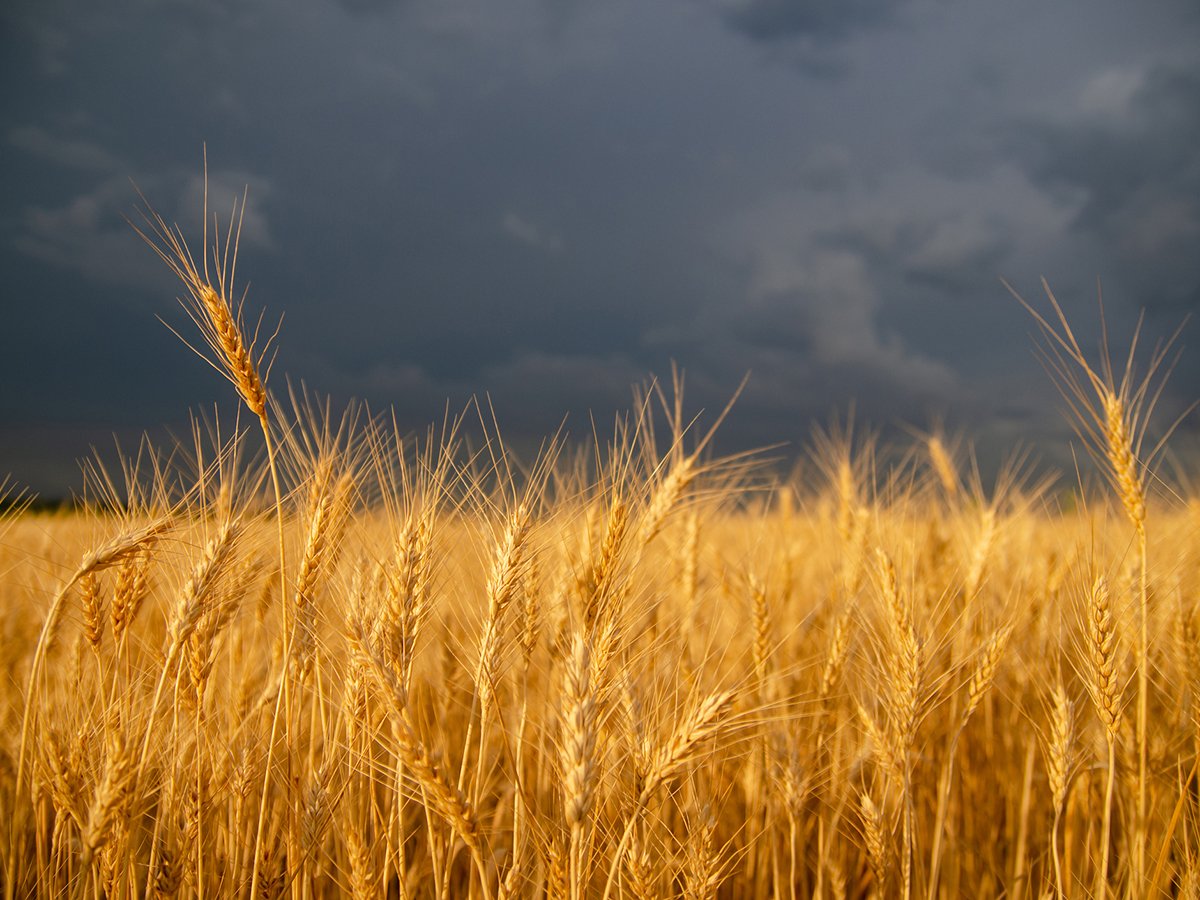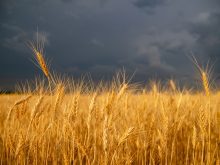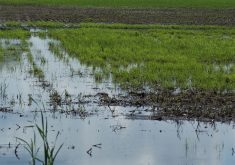“My mom’s a goat. Can I help you?”
The unique telephone greeting was discovered upon calling a number on
the back of a video. It was enough to get a person tongue-tied, in
fact, while trying to formulate a polite response.
But once we got past the preliminaries, the truth emerged.
It all started when Tia, a foal on the Glen and Judy Wutzke acreage
near Dalmeny, Sask., lost its mother shortly after birth.
The Wutzkes raise Quarter horses and already had some unfortunate
Read Also

Late season rainfall creates concern about Prairie crop quality
Praying for rain is being replaced with the hope that rain can stop for harvest. Rainfall in July and early August has been much greater than normal.
experience with orphans. They’d lost a mare the year before and found a
surrogate mother to look after it. That meant uprooting the foal and
going through the aggravating process of finding, introducing and
monitoring a foster mother. Results were less than satisfactory, says
Glen Wutzke.
Then along came Tia’s situation. This time, the Wutzkes sought other
options.
The results? A healthy foal, a La Mancha dairy goat named Minnie, and a
28-minute documentary called My Mom’s a Goat, released earlier this
month.
“We had heard about it but we didn’t know anybody who had done it,”
says Wutzke about using nanny goats to nurse foals. They found it to be
a comparatively easy and healthy way to raise a foal.
He and Judy began making a home video of their experience, thinking it
would help horse owners in similar situations.
But things snowballed after a meeting with a promoter who had bigger
ideas. Now they have a video for sale and a website,
www.mymomsagoat.com, which will soon be offering T-shirts and posters,
Wutzke says.
Promotions aside, the video seems true to the Wutzke’s original intent
of helping other horse owners with a thorny problem. It talks about
bottle and pail feeding, choosing a goat and creating a stanchion.
A section on health features veterinarian Kim Ward of the Martensville
Veterinary Clinic, in which he says goat’s milk is “a close second” to
mare’s milk in terms of fats and sugars.
It turns out a goat also provides better socialization for young
four-legged beasts, says the video. The goat taught the foal to eat
grass, hay and oats – behaviours that humans would be hard-pressed to
teach convincingly.
Contrary to the plaintive song lyrics on the video, the foal never does
find its mother, but it does find an adequate although temporary
substitute. Glen and Judy still own Tia, plus five other horses.
And a docile dairy goat named Minnie.

















